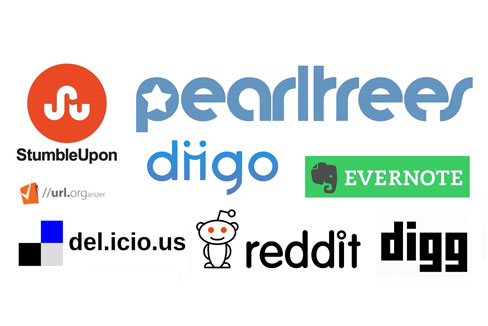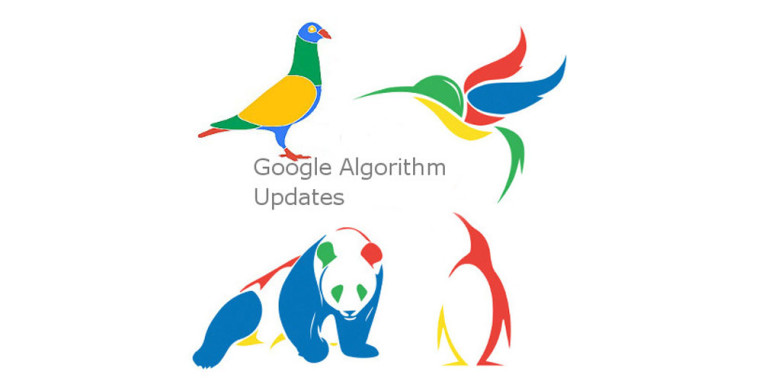How to do SEO for Multiple Countries
Do you want to ascertain a considerable increase in traffic? Of course, your answer would be yes.
The most accessible thanks to doing that are to optimize your SEO for various languages and countries.
The international industry based on your content is significant, and always remember that most of the planet doesn’t know how to speak proper English.
You will miss a big audience if you will only target English speaking audience in your country.
If you are a beginner who wants to know how to start a blog in India 2021 from scratch, read our blog to untap the hidden details of a successful blog.
Table of Contents
What is SEO for Multiple Countries
International SEO helps optimize the search presence for people situated in several countries and know different languages around the globe.
Using localization signals, geographic targeting, and other localization signals, you can target a large number of users based on your content.
Also Read: Google My Business Optimization to rank your local websites.
How international SEO works around the corner? Google makes efforts to match search results to the language and site of the searcher.
You can add individual signals to your website that help Google and other search engines know your site’s status. When your site has content, it will only be suitable for somebody from a particular country searching respective to a specific language.
International SEO optimizes your website so that search engines can quickly identify which countries you would like to focus on and which languages you employ for business.
If you recognize that your website’s fair share, visitors come from a particular country where you are situated, speak different languages, or both.
Then it’s going to be time to form some changes to your website to make a far better experience for all of your international visitors.
On the surface, international SEO could seem sort of a foreign concept, but you’ll be more conversant in it than you recognize.
Consider international SEO as geotargeting, but rather than optimizing your website to draw in traffic from your area, you’re optimizing it for various countries and languages.
Suppose you are looking to make an internationalized site (i.e., one that specifically targets a particular country and a specific language).
esults, with various boilerplate languages.
Sometimes, you’ll only be looking to focus on a selected language or a selected country.
In these cases, you’ll only want to figure out one or two of these three goals. Say, for instance, you’ve got a web clothing company that focuses on T-shirts with slogans in France.
Since Mexico merely is as relevant to your business as France, you’d want to focus on the french language, but not any specific country.
How to Implement SEO for Multiple Countries in 4 Steps
1. Setting the Specific Country Language.
Make sure you provide information suited to your targeted audience. By using the local currency, communication, and timezone along with website contact information like phone numbers and addresses, you’re sending users and search engines strong signals that they are within the right spot.
Also, we believe in cultural differences when you’re creating your design and content.
Different regions check out things like color, layout, and elegance of humor in very alternative tricks.
By making it extremely clear that your page is for them, you’re increasing the probabilities that they will have a positive experience. So, the signals are much more about helping search engines show the appropriate content to the appropriate people than cluing users.
Google utilizes the visible content of your page to work out its language. We don’t use any code-level language information like Lang attributes or the URL.
You’ll help Google determine the language correctly by employing a single word for your content, initiating the navigation on every page, and ignoring side-by-side translations of the language.
Translating your pages’ boilerplate text will keep most of your content during a single language to create a bad user experience if an equivalent content appears several times in search results, with various boilerplate languages.
If you’ve got multiple versions of a page:
You can also target your website or parts of the site to users during a single specific country speaking a selected language. It will improve your page rankings within the target country, but at the expense of leads to other locales/languages.
To geotarget your site on Google:
2. Local specific URLs
Consider using a URL structure that creates it easy to geotarget your site, or parts of it, to different regions. The following table describes your options:
For example, I’m targeting Chennai based audience, so my website URL will be – https://boobalan.me/local-seo-chennai/
Google relies on a bunch of signals to work out the most unaffected audience for a page:
Country-code top-level domain names (ccTLDs).
These are tied to a selected country (for example, .de for Germany, .cn for China). Thus are a robust signal to both users and search engines that your site intended for a particular country.
A set of states have restrictions on who can use ccTLDs, so make sure to try to do your research first. We also treat some vanity ccTLDs as gTLDs, as we’ve found that the users and the webmasters both frequently see them as more generic than country-targeted.
We do not have an entire list of such vanity ccTLDs that we treat as gTLDs because such an inventory will always change with time. Look at Google’s list of gTLDs.
He is replacing statements, whether in tags, headers, or sitemaps.
Server location
The server location is usually physically near your users and maybe a sign about your website’s intended creative audience. Some sites utilize distributed content delivery networks (CDNs) or hosted in a country with better webserver infrastructure, so it’s not a definitive signal.
Also Read: Top 10 Web Hosting Companies In India to make you website load faster.
Other signals
Other sources of clues on your site’s intended audience can include local addresses and phone numbers on the pages, the utilization of local language and currency, links from other local venues, and Google My Business (where available).
What Google doesn’t do:
Google crawls online from different locations around the world. We don’t plan to vary the crawler source used to seek out any possible variations during a page. Now, any locale or language variation that your site exposes should be communicated to Google explicitly through the methods shown just here.
Google ignores locational meta tags or geotargeting HTML attributes.
3. Use .hreflang or sitemaps
If you’ve got multiple versions of a page for various languages or areas, let Google know about these sets of variations. Doing this will help Google Search point users to the first appropriate versions of your webpage according to language or region.
Just keep in mind that Google might still find your page’s alternate language versions even without taking action. Still, it’s usually best for you to explicitly indicate your language- or region-specific pages.
Some example scenarios mentioned below were showing alternate pages recommended:
The local versions of a page are considered duplicates if the most content of the page remains untranslated.
4. Generic top-level domains
Generic top-level domains (gTLDs) are domains that are not related to specific locations. Suppose your site features a generic top-level domain like .com, .org, or any of the areas listed below and needs to focus on users during a particular geographic location. In that case, you should explicitly set a rustic target using one of the methods described previously.
Google treats the subsequent as gTLDs, which will geotarget in Search Console:
Generic Top Level Domains (gTLDs): Unless a top-level domain registered as a rustic code top-level domain (ccTLD) with ICANN, Google will treat any TLD that resolves through IANA DNS root zone as a gTLD.
Examples are:
.com, .org, .edu, .gov and more …
Generic regional top-level domains: Although these domains are related to the countryside, they’re generally treated as generic top-level domains (much like .com or .org):
.eu
.asia
Generic Country Code of Top Level Domains (ccTLDs):
Google treats some ccTLDs such as .tv, .me, etc. as gTLDs, as we’ve found that users and webmasters both frequently see these more generic than country-targeted. Here may be a list of these ccTLDs (this list may change).
.ad, .as, .bz, .cc, .cd, .co, .dj, .fm, .io, .la, .me, .ms, .nu, .sc, .sr, .su, .tv, .tk, .ws
5. International Targeting report
Use the International Targeting report, monitor your .hreflang errors, or settle on a rustic that should prioritize your search results. This report has the subsequent sections:
Language section: This monitors the usage and all the errors of .hreflang tags on your site.
Country section: This sets a site-wide country target just for your entire site.
Country tab
Google Search returns the first relevant and useful sites for a user. Due to this, search results can differ between a user in Ireland and a user in France.
If your site features a generic top-level domain, such as .com or .org, you’ll help us determine which countries are vital to you. If your website features a country-coded top-level domain (such as .ie or .fr), it’s already related to a geographical area (in this instance, Ireland or France). If you employ a country-coded domain, you will not be ready to specify a geographic location. You’ll define a target country within the International Targeting report.
Setting a rustic target.
Every time on the International Targeting report, click the Country tab always.
Check the Geographic target checkbox and then choose your country target easily. If you want to make sure that your site isn’t related to any country or region, select Unlisted within the drop-down list.
This setting is merely for geographic data. If you’re targeting users in several locations—for example, if you’ve got a French site that you want users in France, Canada, and Mali to read—don’t use this tool to line France as a geographic target.
A real example of where it might be helpful is for a food-based website: if the food business is in Canada, it’s probably not of interest to parents in the UK. But if your creative content is in French and is important to people in multiple countries/regions, it’s probably better not to restrict it.
Determine What International Content you’ll Provide
Do you want to optimize search results supported language, geotargeting, or both?
Some sites prefer to specialize in language, like Facebook’s home page, which allows users to pick their particular style. Air Asia uses a pop-up to let users select their language and country, sending them to a chosen URL supported their selection.
You can also target content by country AND language choice just like eBay, which makes a separate marketplace within the regional languages of more than 23 different nations. British clothing brand owner Boden customizes content by country, with independent websites for patrons within the UK, us, Germany, France, Australia, and more.
As you’ll see, the spectrum of content ranges from directly translating your English material into more languages to making fully customized experiences as eBay does. Once you recognize what international content you’ll provide, you’ll get to decide how to structure your website for international SEO.
So,
Once you have decided to optimize your site for international audiences and other languages, you would like to correctly line it up.
First, choose your exact strategy. Confirm you’re able to make the needed changes and find out if you would like content for various locations, languages, or both. Next, you’ll get to pick a URL and domain structure for your content.
It’s essential to urge this step right because you will curse with your decision for the future. If you’re getting to found out your SEO for various languages, confirm to use a person’s translation and include the required information for search engines.
You’ll want to possess a solid sitemap in situ, plus you’ll want to optimize for the .hreflang tag and meta language data that search engines expect.
Start with an informed guess of the user, but provide options for letting them change the setting. If you’ll be targeting a supported location, take steps to make sure you don’t publish duplicate content accidentally, and make sure to users their choices.
You’ll also want to supply custom content-supported locations, including local currencies, cultures, regulations, and general information. If you would like to organize for both language and region, the settings are harder but doable. Targeting the country first and then selecting a language from there is a smarter way.
What strategies will you employ to line up your SEO for various languages and countries?






